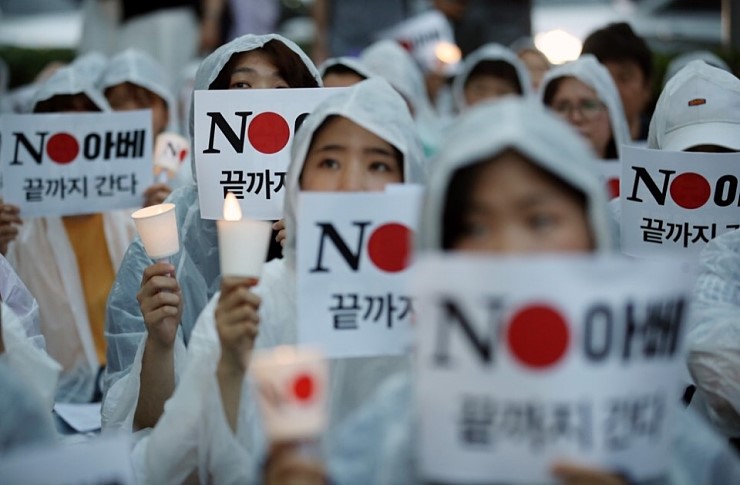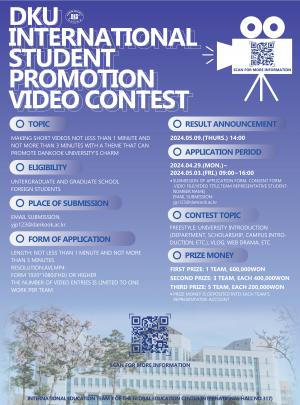Nowadays, boycotting Japan is the biggest issue dominating Korean news. On SNS, Youtube and other media sites, lists of Japanese owned companies are being shared. The boycott crosses many industries such as food, tourism, clothing, etc. Some companies are already feeling the pinch of the boycott. The root of the problem is Japan’s proposed export restrictions.
Before the economic boycott of Japan, clashes between the two nations generally revolved around compensation for forced labor during the Japanese colonial era. On October 30, 2018, the Supreme Court of Korea reached a verdict that Nippon Steel had to pay 100 million won for each victim of the forced labor camps. They argued the 1965 Korea-Japan treaty did not apply to an individual victim’s rights to demand compensation. The Japanese government disagreed, arguing that the decision reversed the ban on individual claims that had already been settled in the 1965 Korea-Japan treaty. In protest of the decision by the high court, Japan strengthened its regulations on exports of essential materials for producing semiconductors and displays starting on July 1, 2019. It was done with the aim of causing confusion and damage to Korea’s semiconductor market.
As Japan announced export regulations against Korea, Korean citizens formed a widespread boycott of Japanese products such as beer, cars, clothes, cosmetics and even travel to Japan. By uploading the list of Japanese companies to boycott on various websites and through social media posts, boycott fever in Korea grew against Japan. People began producing and distributing posters that contained the phrase “Do not buy Japanese goods.” As a result of Korea’s continued boycott, Uniqlo’s sales revenue fell by 30% and the purchase of Japanese cars also declined. Despite the holiday season, money exchanges from Korean to Japanese currencies have also decreased and some low-cost airlines such as T’way and Easter Jet announced that they will cut-down on the number of flights between Korea and Japan. People of all ages and genders are participating in this boycott. According to a public opinion poll released on July 29, seven out of ten people said they were participating in the Japanese boycott. The survey was conducted with 1,000 men and women aged 19 to 69, with the subject “Citizens’ participation and awareness of the Japanese products’ boycott”. 71.7 percent of the respondents claimed they were participating in the boycott against Japan and 14.8 percent of respondents said they would start participating in this boycott movement. However, support for the boycott from local governments and the national government is prohibited. Recently, the Jongno-gu Office in Seoul raised a flag with the words “No Japan” at more than 1,100 locations, including Myeong-dong and then took it down a few hours later. Criticism from Jung-gu merchants and shoppers, including a large number of Japanese tourists, caused the policy reversal. As this boycott against Japan intensified, the Japanese government opted to postpone the exclusion of Korea from its “white list” and allowed the export of a critical product, which it was due to stop exporting on August 9. An anti-Korean sentiment is starting to pervade in Japan.
 |
| ▲ Japan boycott movement is constantly spreading in Korea, criticizing Japan's export regulation. (Photo from naver post) |
To understand more about the economic effects of the Japanese boycott, we interviewed SME Daily’s, Lee Won-ho an editorialist. According to him, the industry suffering the most from this boycott is Japan’s tourism. About 7.5 million Koreans visit Japan every year, especially to small and medium-sized cities or regions. Hence, if Korean tourists’ consumption decreases, Japan’s lodging and restaurant business could suffer hugely. Some local governments in Japan have expressed their concerns over the recent economic slump. In contrast, Korea’s industries are mostly unaffected by the Japanese boycott. The only ones feeling the pinch are those impacted by Japan’s export restrictions.
However, there has been some movement to replace some products, such as stationery and Uniqlo clothing, with items made in Korea. As a result, product sales volume for companies like Monami, a Korean stationary brand have increased. Company representative Mr. Lee mentioned that they must improve their product quality and competitiveness of their brand in order to maintain these new customers when the boycott ends.
 |
| ▲ The boycott campaign against Japanese products in front of the Japanese Embassy in Seoul (Photo from Hankyoreh) |
We interviewed Yang Ki-ho, professor of SungKongHoe University, to better understand the political effects of the boycott. According to the professor, the export restriction’s ostensible cause is the insufficient administration of export objects, but in reality it’s economic revenge for the judgment against the use of forced labor. He believes that Korea and Japan both have to concede at least one step if this conflict is to come to an end. He also thinks that the government must not intervene in the boycott because it is the right of citizens to express their freedom of choice. Because the boycott has been carried out by citizens and not the Korean government, Japan can only closely observe the matter. However, the Japanese government has issued 5 travel warnings to Korea, a move he thinks is regrettable because this boycott’s main purpose is “No Abe, not No Japan”. According to his views, there is no possibility for the U.S. government to intervene as well, even though President Trump did mention that he would intervene if invited by either President of Korea or Japan. However, the Japanese do not want any foreign intervention and there is no critical push for Korea and Japan to resolve this problem any time soon. However, China has a hefty interest in this conflict because they want peace in the Northeast. However, he argued, that we should not rely on other countries because this is a problem for Korea and Japan to address. Even though it is a bit difficult to resolve, we must find a solution on our own.
This boycott is different from past boycotts. This movement gained momentum through SNS and is expected to continue to impact the economy of Japan. Japan’s damaged economy and its related companies or citizens might then pressure the government to resolve this conflict. Even though the trigger was a political conflict between Korea and Japan, the boycott was a spontaneous and unexpected reaction. This boycott must continue without government intervention and should be resolved without the intervention or assistance of other nations.
 |
| ▲ Sellers stop selling Japan products as the part of Japan boycott. (Photo from YTN News) |
남윤경, 신지희, 나승민 dankookherald@gmail.com

![[Campus Magnifier] Let's Surf the Library!](/news/photo/202404/12496_1765_4143.jpg) [Campus Magnifier] Let's Surf the Library!
[Campus Magnifier] Let's Surf the Library!
![[Campus Magnifier] Let's Surf the Library!](/news/thumbnail/202404/12496_1765_4143_v150.jpg)





